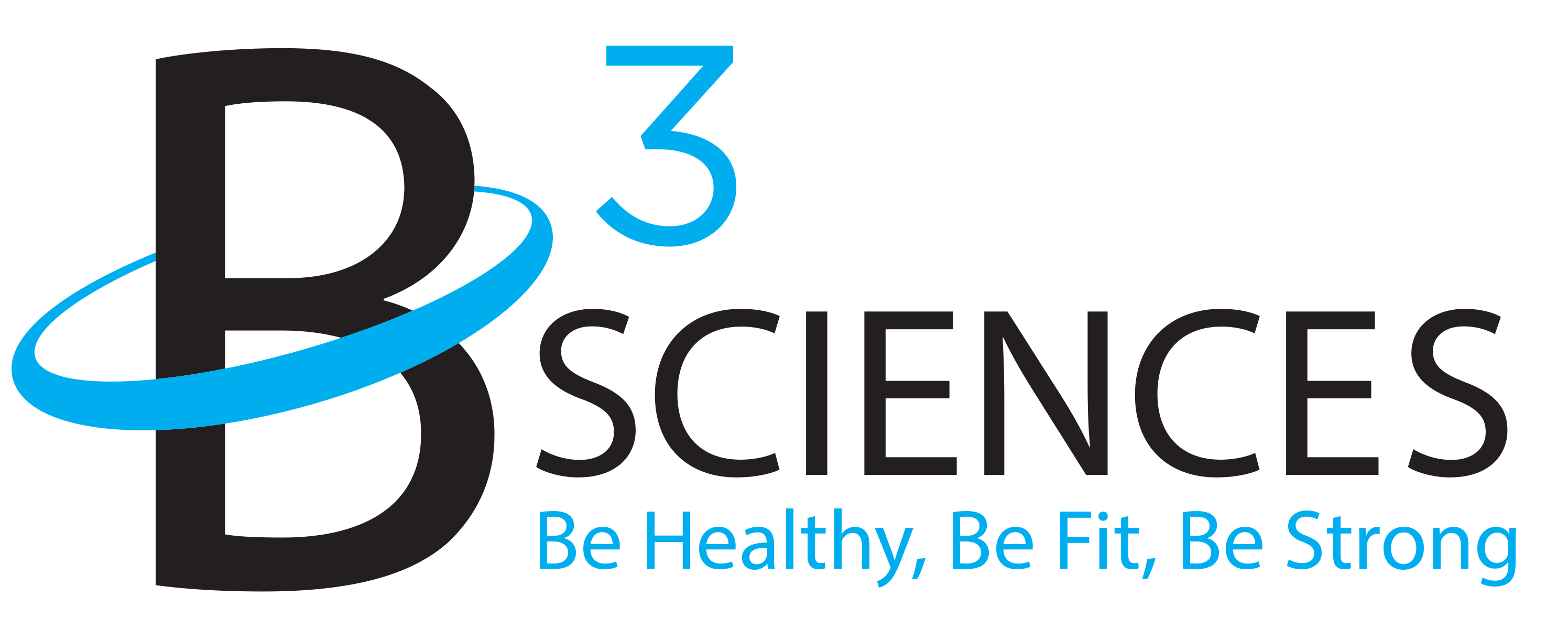B3 Bands for Blood Clots
What Are Blood Clots?
Blood clots form when certain parts of your blood thicken, forming a semisolid mass. This process may be triggered by an injury, surgery, or it can occur inside blood vessels that have stiffened and deteriorated.
Blood clots most commonly start in the legs and travel up through the right side of the heart and into the lungs. This is called deep vein thrombosis (DVT).
Sometimes a blood clot in the leg will feel like a pulled muscle. Other signs include pooling of blood in the leg and cramping in one leg.

Does BFR Training Increase Risk of Clots?
If blood in deep veins is brought to a standstill for a prolonged period, the blood can begin to form clots. Thus it is important to use BFR Bands that do not stop blood flow. Blood Flow should increase during BFR:
• At rest you have a certain amount of blood flow through your extremities, which can average 5 liters/min.
• During vigorous exercise this blood flow can increase to 20 liters/min or more - During exercise with BFR, the flow rate is higher than at rest, but lower than compared to non BFR vigorous exercise.

SUMMARY: When done correctly, you have more blood flow during BFR exercise than you do at rest, thus it does not increase clot risk, when done correctly (Choose the right BFR Bands).
Stay away from most BFR Bands and Occlusions Straps or Belts! There are a lot of BFR companies trying to penetrate the BFR market. The majority of them have never tested their BFR device for safety to show that they do not stop blood flow. STAY AWAY FROM THESE DEVICES.
B3 Bands Patented Multi-Chamber Design:
The B3 Bands from B3 Sciences are designed so that when the instructions & safety rules are followed, they cannot stop blood flow. B3 Bands are the only BFR device available today with this multiple air chamber design that is proven safe for blood flow.
Watch a short video of Dr. Mike, explaining the multiple air chamber design
B3 Bands Safety Studies:
B3 Sciences is one of the few companies that have conducted safety studies on their BFR Bands. Studies at the University of Texas showed that under normal exercise, B3 Bands did not stop blood flow, and did not increase arterial blood pressure, and did not increase oxygen demand on the heart. See links to studies below.
Talk to Your Doctor
If you are pre-disposed to clots, have a history of clots, or are concerned about clots, talk to your doctor before beginning BFR.
We encourage you to share this page with your Doctor for him/her to review.
Show Your Doctor This Peer Review of BFR Which Includes Risk:
"Increased strength and hypertrophy in young and older populations”
“BFR-RE results in greater post-exercise hypotension than HL-RE”
“The totality of the literature reveals minimal adverse events pertaining to VTE and clinically reported events have not been reported”
“Resistance training has demonstrated the ability to up-regulate the fibrinolytic pathway and has been demonstrated after just one exercise session and in healthy young participants and aged patients with coronary artery disease (CAD). It would appear that BFR-RE stimulates the fibrinolytic system”
Safety Study #1: Walking
Summary
These findings suggest that at-risk populations can perform BFR without fear of overt cardiovascular risk.
Safety Study #2: Yoga
Summary
- We found that there were no further elevations in arterial blood pressure and myocardial oxygen demand when B3/B Strong Bands were added to yoga practices.
- Our findings indicate B3/B Strong Bands can be applied to yoga while avoiding unfavorable hemodynamic responses and preserving the intended effects on muscle hypertrophy.
READY TO GET STARTED?
We will provide you with a BFR Coaching at no additional Cost
Follow our simple guides and videos to see fast results in 30 days
We are always available to answer questions
30 Day Money Back Guarantee
If for any reason you are not completely satisfied, contact us within 30 days for a return and full refund (minus shipping charges)
But remember this, once you try B3 Bands you will never want to exercise the old way again!


